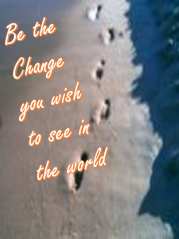Many people are still confusing cross-cultural and trans-global leadership including some diversity experts. They mix between both as if they were one and the same. I beg to differ. While both sound like sharing the same definition, in actuality there is a difference between both.
Nowadays in order to succeed as a leader, as a business, and as an organization the need for cross-cultural and trans-global competencies is crucial.
In the age of the internet, the new political and economic reforms like the falling of the Berlin wall, the disintegration of the USSR, NAFTA, ASEAN-China Free Trade Area, EU as well as the emerging BRIC countries like (Brazil, Russia, India, and China ) as well as well as the MIKT countries (Mexico, Indonesia, South Korea, and Turkey); it becomes clear and evident that organizations’ leaders need to build not only trans-global competence but also cross-cultural competence, awareness and flexibility to have the ability and capability to survive and thrive in the new reality of the flat world we live in.
According to PriceWaterhouseCoopers’s 14th Annual Global CEO Survey (2011) found that ‘‘bridging the global skills gap’’ was one of the top concerns cited for the future, especially for organizations that are looking to attract, recruit, develop, and retain talents globally.
Confusion, frustration and costly mistakes are the results of lack of global skills mainly due to the ignorance about the impact of cultures on the workplace (we will discuss cultures here below). The old mentality of “We have always done it that way” leads to expensive failures, same with the idea of “Color blindness” (though could be coming from a good place) is actually detrimental to the workplace because there is an erroneous belief that paying attention to color or race is fundamentally discriminative.
“To ignore cultural differences is unproductive… Choosing not to see cultural diversity limits our ability to manage it – that is, to minimize the problems it causes while maximizing the advantages it allows… When we blind ourselves to cultural diversity, foreigners become mere projections of ourselves.” (Adler, 1991, pp. 97)
The most important facets of trans-global leadership are the following three main competencies:
- Being Culturally flexible: Basically to roll with the punches realizing that there are differences in other countries, populations, and cultures that are not wrong or weird, just different
- Value Cultural differences and Minimize Ethnocentricity (My culture is better than yours theory)
- Tolerance of ambiguity (Which is part of Geert Hofstede four main components of Cultural insights)
Now what about the cross-cultural leaders; how and why they are different from the trans-global leaders?
Though both leaders must have the trans-global competencies mentioned above, there is a lot more to add for the cross-cultural leaders.
There is still a misguided assumption that Culture pertains only to race, color, religion, and ethnicity: meaning that there is still a lot of confusion between Diversity and Affirmative Action or even Protected groups.
Diversity are the unique characteristics that makes each one of us as a human being, Culture is the lens that we see the world through and it contains our beliefs, values, assumptions and behaviors, the way we communicate, negotiate, take a decision, behave socially, even the way we feel.
That lens is first imposed on us by our parents our first contact in life, then schools, friends, religious institutions, society etc… so it is an ever changing phenomena.
It is important to note that there are individual cultures within the group cultures. That being said when we say cultural competence: It means all of that covers the global competence (not limited to) as:
- Color
- Country
- Religion
- Race
- Ethnicity
- Political status
- Family structure
Furthermore it includes (not limited to):
- Age
- Gender
- Sexual Orientation
- Disabilities (Both visible and invisible)
- Parental status
- Marital status
- Military status
- Veteran status
- Job classification (Blue or White collar)
- Socio-economic factors
- Education
- Geographical location
- Even Diversity of thoughts
Why should we care about cultural competence in the workplace?
- One million legal immigrants enter the United States Annually
- The minorities are soon to be majorities (Hispanics 3 to 1, the Asian American and African American communities are increasing as well, more communities emerged in the latest Census report as Armenians, Middle Easterns etc…)
- Women are becoming a workforce to reckon with – very soon the workforce will be 50/50 males to females. Women are reaching high leadership positions that is totally different from the male leadership style
- Due to the civil rights and the change of laws, the LGBT community is thriving and constitutes a huge buying power and part of the society that can no longer be ignored
- Due to the changes in the ADA (American Disability Act) laws: Now workplaces have to deal with disabilities both visible (Physical) as well as invisible (emotional and other) in a different way to accommodate the disabilities with reasonable accommodation without a hardship on the organizations
- For the first time in US History four generations are at work with different cultures, communication and working styles due to the ADEA (Age Discrimination Employment Act) that protect employees older than 40 years. Also due to new scientific research people are living longer and enjoying their lives in a healthier way, also the economic events of the last few years forced some employees to continue working due ti the loss of their retirement or 401K.
These are only few reasons why we should get serious about enforcing (yes enforcing) cultural competence and developing cross-cultural leaders that can bridge the gap between the different cultures
In short trans-global leadership deals mostly with International and cross the border issues including expats, and Cross-Cultural leaderships deals with different employees both nationally and internationally.
I am very passionate about Diversity, and cultures that is why I meant to clarify the difference between global and cross-cultural leadership at least in my book.
Home of the D.I.A.L.O.G. Programs
“Diversity And Inclusion for Leadership Organizational Growth”
T: 818 861 9434 •
Sahar Consulting, LLC
www.saharconsulting.com
Contact me: ![]() SaharConsulting
SaharConsulting




